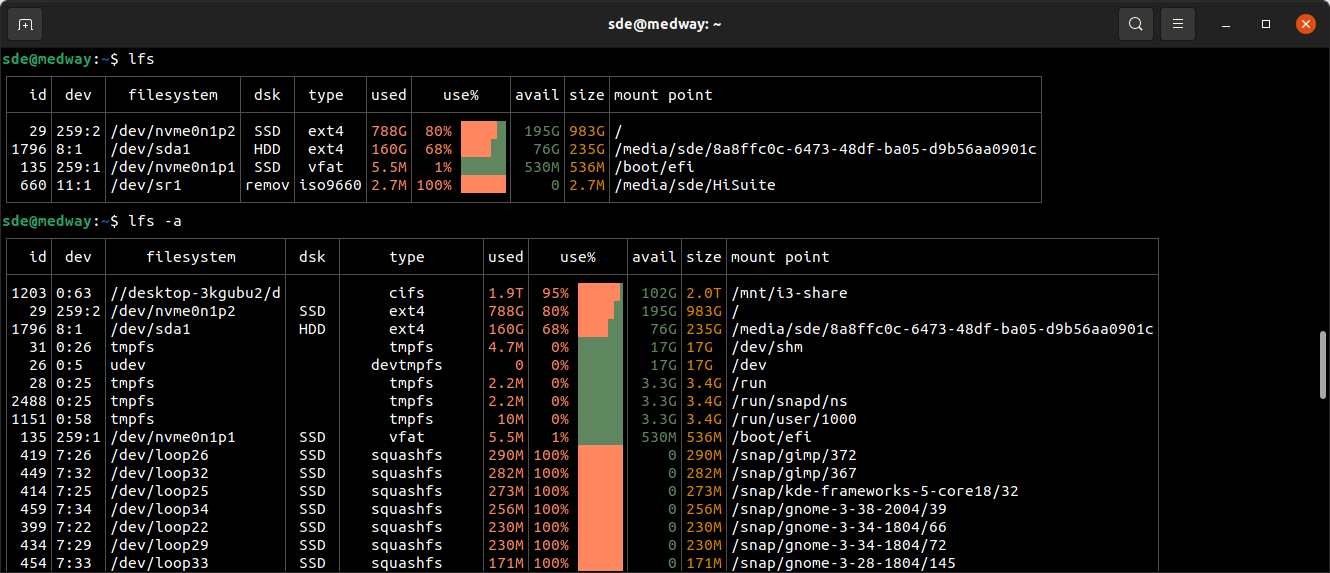In Operation
Here’s an image showing lfs in operation. It actually shows two instances of the program, with the second command showing all mount points.
$ lfs and $ lfs -a

As the image shows, there’s a graphical representation for disk usage. That’s a useful visual improvement helping you to instantly know if a filesystem is running out of space.
The dsk column helps you determine the disk. There’s entries for SSD (solid state drive), HDD (mechanical hard disk drive), remov, RAM (an in-memory device), and crypt (a crypted disk).
The software has very few options. Besides showing the version, help, the only other option is the -j flag, which outputs in JSON, an open standard file format and data interchange format that uses human-readable text to store and transmit data objects consisting of attribute–value pairs and arrays.
All sizes are displayed using the current SI recommendations: 1M is one million bytes.
Pages in this article:
Page 1 – Introduction / Installation
Page 2 – In Operation
Page 3 – Summary
